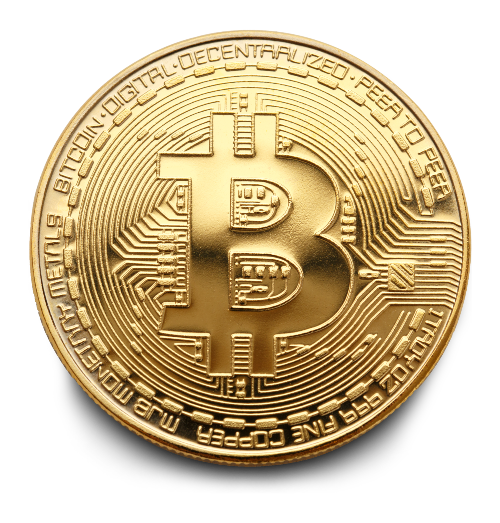Bitcoin is a decentralized digital currency, without a central bank or single administrator, that can be sent from user to user on the peer-to-peer bitcoin network without the need for intermediaries. Transactions are verified by network nodes through cryptography and recorded in a public distributed ledger called a blockchain. Bitcoin is the first and most widely used cryptocurrency, created in 2009 by an unknown individual or group of people using the pseudonym Satoshi Nakamoto.

Bitcoins can be exchanged for other currencies, products, and services. As of January 2021, there were over 18 million bitcoins in circulation with a total market capitalization of over $500 billion. Bitcoin is unique in that there are a finite number of them: 21 million. Transactions on the bitcoin network are grouped together in blocks and added to the blockchain approximately every 10 minutes through a process called mining.
Bitcoin is often considered a store of value, a digital gold, and a way to move money around the world, but it can be also used as a medium of exchange. Because it operates independently of central banks and governments, it has been associated with increased financial privacy and a potential tool for illegal activities. However, bitcoin and other cryptocurrencies have increasingly been adopted by mainstream companies and investors as well.
Bitcoin Wallet
There are several ways to store your bitcoin:
- Bitcoin wallets: A bitcoin wallet is a software program where bitcoins are stored. There are several types of bitcoin wallets, including:
- Hot wallets: These are wallets that are connected to the internet and are considered less secure than cold wallets. Examples include mobile wallets and web wallets.
- Cold wallets: These are wallets that are not connected to the internet and are considered more secure than hot wallets. Examples include hardware wallets and paper wallets.
- Bitcoin exchanges: Some bitcoin exchanges, such as Coinbase, allow you to store your bitcoin on their platform. This can be convenient, but it also means that you are trusting the exchange to keep your bitcoin safe.
- Bitcoin ATM: Some bitcoin ATMs allow you to store your bitcoin on the ATM itself, but this is not a common practice and it’s not a secure method.
It’s important to note that the security of your bitcoin is your responsibility. You should always use a secure wallet and keep your private keys (codes that allow you to access your bitcoin) safe. Also, be aware of phishing scams and other frauds, and never share your private keys with anyone. If you are new to Bitcoin, it’s recommended to start with a software or web wallet, these are easy to use and can be accessed from anywhere, but also less secure than hardware wallets.
Hardware Wallet
A hardware wallet is a physical device that stores your private keys offline, or “cold” storage, providing an added layer of security for your bitcoin. When you want to access your bitcoin, you connect the hardware wallet to a computer or mobile device and enter a PIN or passphrase to unlock it. The private keys are stored on the hardware wallet and are never exposed to the internet, making them much less vulnerable to hacking or theft.
Some of the popular hardware wallets are: Trezor, Ledger Nano S, and KeepKey. These hardware wallets are designed to be easy to use and have built-in screens to confirm transactions and keep your private keys secure. When you first set up a hardware wallet, you are provided with a seed phrase, which is a series of words that you can use to recover your bitcoin if your hardware wallet is lost or stolen. You should store the seed phrase in a safe place as a backup.
When you want to make a transaction, you connect the hardware wallet to your computer or mobile device and use the wallet software to initiate the transaction. The hardware wallet will display the transaction details on its built-in screen for you to confirm, and then you will use the hardware wallet’s buttons to sign the transaction. Once the transaction is signed, it is broadcast to the bitcoin network for confirmation.
It is worth noting that hardware wallets are considered to be the most secure way to store bitcoin, but it is important to keep the device safe and never share the seed phrase or PIN with anyone.